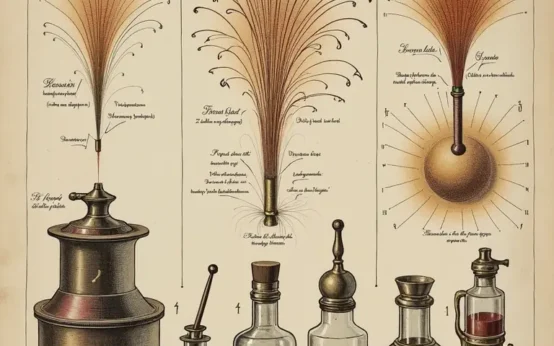For centuries, even millennia, humanity has turned to the natural world for healing. Before the advent of modern pharmaceuticals, traditional herbal remedies weren’t simply based on superstition or guesswork. They were, and often still are, the product of meticulous observation, iterative experimentation, and a deep understanding of the relationship between plants, the human body, and the environment. While modern science provides us with powerful tools for isolating active compounds and understanding mechanisms of action, it’s crucial to recognize that traditional systems of medicine weren’t *lacking* in logic; they simply employed a different, often holistic, framework for understanding health and illness.
The Roots of Traditional Knowledge
Traditional herbalism isn’t a monolithic entity. Across cultures, diverse systems developed, each reflecting the specific flora, climate, and cultural beliefs of its origin. Ayurveda in India, Traditional Chinese Medicine (TCM), the herbal traditions of the Amazon rainforest, and the practices of indigenous North American healers – all represent unique, yet often surprisingly convergent, approaches to healing with plants. What they share is a common thread: a sustained, multi-generational observation of plant effects.
This observation wasn’t passive. It involved careful documentation of which plants were used for specific ailments, how they were prepared (infusions, decoctions, poultices, etc.), dosage considerations, and the observation of both positive and negative effects. Crucially, this knowledge was often passed down orally, through apprenticeships, and embedded within cultural practices, ensuring its preservation and refinement over time. The loss of such knowledge today is a serious concern, representing a potential loss of valuable insights.
Beyond ‘Active Ingredients’: The Holistic Approach
Modern pharmacology typically focuses on identifying and isolating ‘active ingredients’ – the specific chemical compounds within a plant responsible for its therapeutic effect. While this reductionist approach has been incredibly successful, it often overlooks the complex interplay of multiple compounds within a plant, as well as the plant’s interaction with the individual’s unique physiology and environment.
Traditional herbalism, in contrast, generally views the plant as a whole – a complex matrix of chemicals working synergistically. This holistic approach acknowledges that different compounds within a plant can influence each other’s absorption, metabolism, and efficacy. For example, a plant might contain a compound that enhances the bioavailability of another, or a compound that mitigates potential side effects. This is where the art of herbalism truly shines – the skilled practitioner understands how to combine plants to maximize their therapeutic benefits and minimize risks.
The Power of Empirical Observation: Case Studies
Let’s look at a few examples illustrating the empirical basis of traditional herbal remedies. Consider willow bark, traditionally used for pain relief. Modern science has identified salicylic acid as the active ingredient, which is the basis for aspirin. However, traditional users of willow bark didn’t need to know about salicylic acid to recognize its pain-relieving properties. They observed its effects through repeated use and refined their preparation methods to optimize its efficacy.
Similarly, the use of foxglove (Digitalis purpurea) for heart conditions predates the isolation of digoxin, the drug used to treat heart failure. Traditional healers noticed that patients with dropsy (edema, often a symptom of heart failure) improved after consuming foxglove. Again, this observation wasn’t based on understanding the plant’s effect on cardiac muscle contraction; it was based on observing a consistent correlation between foxglove use and improved patient outcomes.
Another striking example is the use of certain plants containing quinoline alkaloids, such as cinchona bark, to treat malaria. Indigenous populations in the Andes Mountains discovered the fever-reducing properties of cinchona bark long before the parasitic cause of malaria was understood. The story of quinine and its impact on global health is a testament to the power of empirical observation.
The Importance of Preparation Methods
The way a plant is prepared significantly impacts the compounds that are extracted and their subsequent bioavailability. Traditional herbalists understood this intuitively. Different preparation methods – infusions (steeping in hot water), decoctions (boiling in water), tinctures (extracting with alcohol), poultices (applying directly to the skin) – were chosen based on the plant’s properties and the desired effect.
For instance, alcohol-based tinctures are excellent for extracting resinous compounds, while water-based infusions are better for extracting water-soluble compounds. The temperature and duration of extraction also play crucial roles. Traditional knowledge often includes specific instructions on these parameters, reflecting a deep understanding of plant chemistry, even if that chemistry wasn’t explicitly articulated in modern terms. This echoes the surprisingly consistent science found in other ancient crafts, like soapmaking, where traditional recipes often relied on empirical adjustments to achieve optimal results.
The Role of Context: Individualization and Environment
Traditional herbalism often emphasizes the importance of individualizing treatment based on the patient’s constitution, symptoms, and overall health. This is in contrast to the ‘one-size-fits-all’ approach that sometimes characterizes modern medicine. Herbalists consider factors such as age, gender, lifestyle, and emotional state when prescribing remedies.
Furthermore, the environment in which the plant grows is also considered important. Plants grown in different soils, climates, and altitudes may produce different chemical profiles. Traditional herbalists often preferred to source plants locally, believing that they were better adapted to the local environment and more effective for treating local ailments. This appreciation for contextual factors is also evident in the historical development of map projections, where the best approach depended heavily on the intended use and the region being mapped.
The Intersection with Modern Science
Modern scientific research is increasingly validating the efficacy of many traditional herbal remedies. Studies are confirming the pharmacological effects of plants used for centuries, and researchers are identifying new compounds with potential therapeutic applications. However, it’s important to approach this validation with humility and respect for the traditional knowledge that paved the way.
For example, research on curcumin, the active compound in turmeric, has shown its potent anti-inflammatory and antioxidant properties. Similarly, studies on ginseng have demonstrated its ability to enhance cognitive function and boost the immune system. These findings are not simply “discoveries” of modern science; they are confirmations of knowledge that has been held by traditional healers for generations.
Challenges and Limitations
Despite its strengths, traditional herbalism also has limitations. The lack of standardized dosages, potential for misidentification of plants, and interactions with other medications are all potential risks. It’s crucial to seek guidance from qualified herbalists and healthcare professionals before using herbal remedies, especially if you have underlying health conditions or are taking prescription drugs.
Furthermore, the sustainability of sourcing medicinal plants is a growing concern. Overharvesting can deplete wild populations and threaten biodiversity. Responsible sourcing practices, such as cultivating medicinal plants and supporting sustainable harvesting initiatives, are essential to ensure the long-term availability of these valuable resources.
The Enduring Legacy
The enduring legacy of traditional herbalism lies in its emphasis on observation, holism, and the interconnectedness of health, environment, and culture. While modern science provides us with powerful tools for understanding the complexities of the human body, it can also benefit from the wisdom accumulated over centuries of empirical observation.
Just as ancient riggers developed an intuitive understanding of knot strength through practical experience, traditional herbalists honed their knowledge through careful observation and refinement. And, much like the meticulous process of ink formulation, herbal remedies often involved a deep understanding of the materials at hand and the subtle art of combining them effectively.
The future of medicine may lie in integrating the best of both worlds – the rigor of scientific inquiry and the wisdom of traditional knowledge. By embracing a holistic perspective and acknowledging the power of empirical observation, we can unlock the full potential of the natural world to promote health and well-being.
Beyond Plants: Parallels in Other Traditional Sciences
The consistent logic underlying traditional herbal remedies isn’t isolated. We see similar patterns in other traditional domains of knowledge. Consider the intricate understanding of acoustics and harmony embedded in the design of traditional clock chimes, or the detailed knowledge of weather patterns and plant cycles used by traditional agricultural societies. These examples demonstrate a broader principle: humanity has long been capable of developing sophisticated, empirically-based understandings of the natural world, even without the benefit of modern scientific instruments.
The key takeaway is this: traditional practices weren’t simply “folklore.” They were, and often continue to be, sophisticated systems of knowledge built on observation, experimentation, and a deep connection to the environment. Recognizing this allows us to approach these traditions with respect and to learn from the wisdom they hold.


 The Curious Mechanics of Automaton Birds: A History of Feathered Clockwork
The Curious Mechanics of Automaton Birds: A History of Feathered Clockwork  The Curious Mechanics of Celestial Globes: Mapping the Heavens in Miniature
The Curious Mechanics of Celestial Globes: Mapping the Heavens in Miniature  The Surprisingly Consistent Science of Historical Weather Vanes – Art, Meteorology & Directional Lore
The Surprisingly Consistent Science of Historical Weather Vanes – Art, Meteorology & Directional Lore  The Unexpectedly Consistent Science of Early Firework Composition: Alchemy, Aesthetics & Aerial Displays
The Unexpectedly Consistent Science of Early Firework Composition: Alchemy, Aesthetics & Aerial Displays  The Surprisingly Consistent Science of Early Map Projections: Distorting the World to Understand It
The Surprisingly Consistent Science of Early Map Projections: Distorting the World to Understand It  The Surprisingly Consistent Science of Candle Flame Dynamics: A History of Light, Wax, and Atmospheric Chemistry
The Surprisingly Consistent Science of Candle Flame Dynamics: A History of Light, Wax, and Atmospheric Chemistry